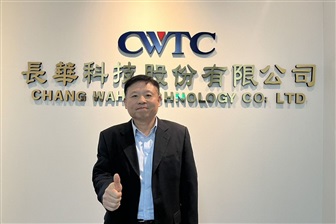Qualcomm Inc. introduced its Snapdragon X2 Plus platform at CES 2026, the newest addition to the Snapdragon X series aimed at professionals, emerging creators, and regular users. The platform promises fast, responsive performance, along with multi-day battery life and portability, addressing diverse computing needs.
Samsung Electronics reported a strong rebound in profitability in the fourth quarter of 2025, supported by rising memory chip prices and sustained global demand from AI data center operators, according to its preliminary consolidated financial results released under fair disclosure rules.
Japanese electronic components manufacturer TDK Electronics announced that it plans to update its industry-leading silicon anode battery technology later in 2026, coinciding with Apple and other electronics makers launching new devices for the end of year shopping season. TDK has made significant progress in increasing battery capacity while maintaining slim device profiles, and its technology is currently mainly adopted by Chinese smartphone makers.
Taiwan-based passive component giant Yageo continues to be affected by and respond to price hikes. Following Kemet's two price increases for tantalum capacitors within six months in 2025, the group's magnetic components brand Pulse has now also announced price increases due to persistently elevated prices of key raw materials, including silver.
Huawei has signalled a renewed push into South Korea's AI infrastructure market, outlining plans to introduce its next-generation AI processor — widely expected to be the Ascend 950 — packaged with an end-to-end stack spanning hardware, software, networking, and storage.
Bao Yungang, vice director of the Chinese Academy of Sciences' Institute of Computing Technology and chief scientist at the Beijing Open Source Chip Academy, predicts RISC-V will become the world's third mainstream CPU ecosystem alongside x86 and Arm within five to ten years.
Marvell Technology has agreed to acquire XConn Technologies to strengthen its position in PCIe, CXL, and UALink switching for AI data center infrastructure, as demand grows for scale-up connectivity in multi-rack accelerator systems.
Looking ahead to 2026, PCB industry leader Zhen Ding Tech. (ZDT) said demand remains solid across high-end applications such as AI servers, optical communications, and IC substrates, with related revenue contributions expected to scale quarter by quarter.
Benefiting from strong demand for artificial intelligence (AI) smartphones and AI servers, IC testing giant Sigurd Microelectronics announced that its December 2025 revenue surpassed NT$1.8 billion (approx. US$57.21 million). The figure not only marked a record high for a single month, but also propelled the company's fourth-quarter 2025 and full-year revenues to new all-time highs.
AMD CEO Lisa Su stated at CES 2026 that the industry has officially entered the "YottaScale" era, marking a shift toward new performance benchmarks. In an interview with CNBC, Su also explained that AI has not slowed the company's hiring pace, that AMD is actively recruiting and prioritizing candidates who are "AI forward."
Nvidia CEO Jensen Huang used his CES 2026 keynote to focus on agentic AI and Physical AI, outlining how the company is extending AI into systems that operate in the physical world. Supply-chain sources said that humanoid robots are viewed as one development direction for Physical AI, with implications for high-performance microcontrollers; however, training remains constrained by scarce and fragmented data.
More coverage



